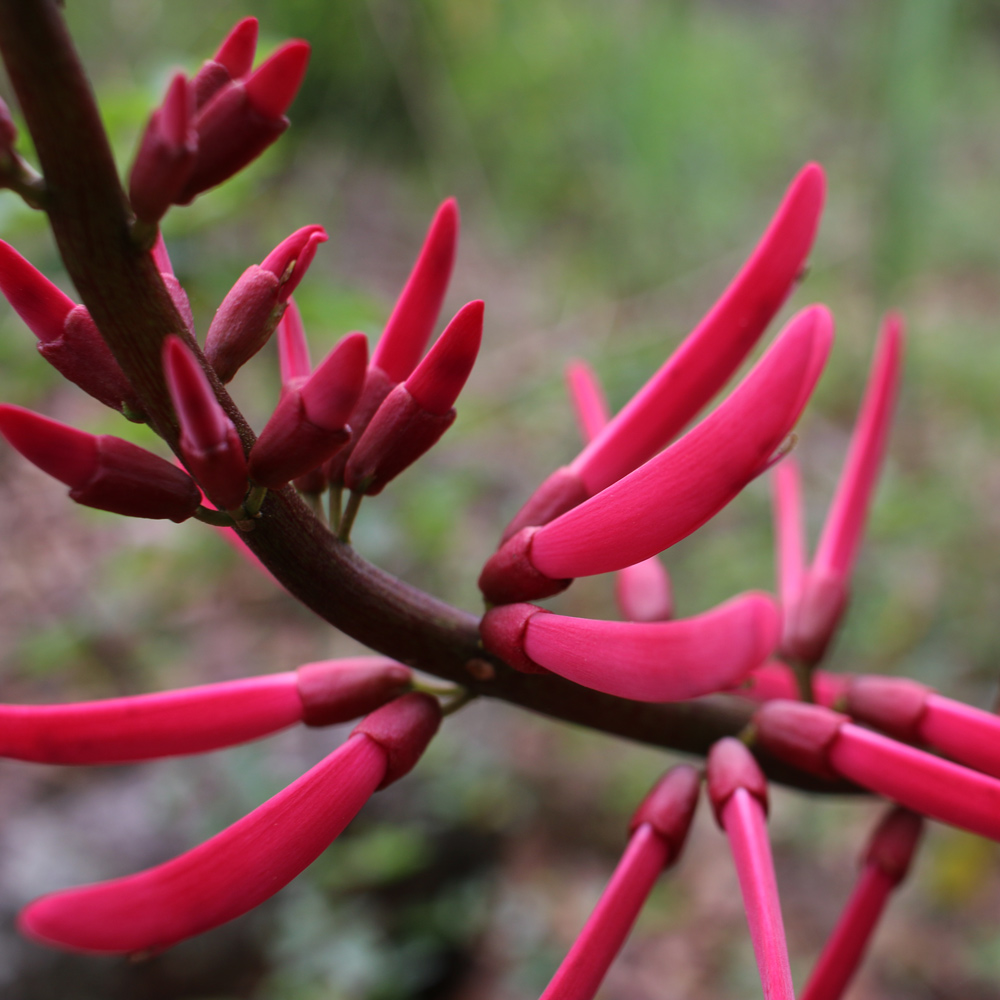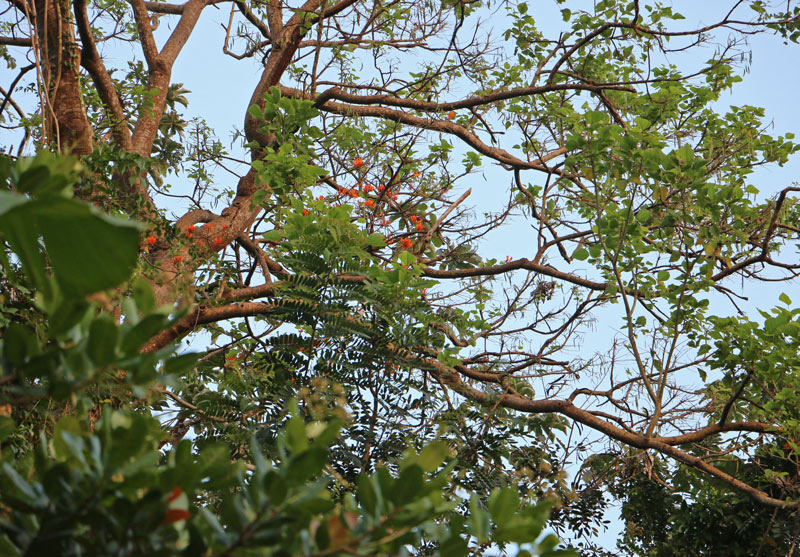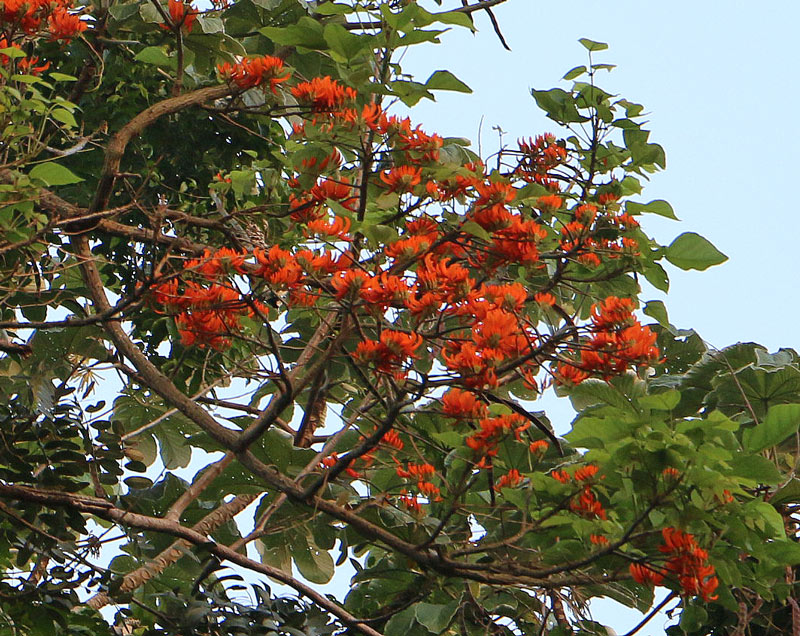Coral beans are a common Florida wildflower.

On the edge of our homestead here in the tropics, I’ve discovered its big brother the coral tree:
The color looks somewhat like that of a poinciana tree, but the growth habigt and leaves are quite different. This tree is probably 60-80′ tall.
I could tell it was a cousin of coral beans by the bloom and the leaf shape. Once I started hunting down Erythrina species, it was easy to find multiple large jungle trees that fit the bill. Though I’m not 100% sure, I believe this is the wild version of Erythrina variegata.
When we first moved here last spring, I found little purple-brown beans all over the ground that looked like a cultivate bean variety… yet there weren’t any bean plants growing nearby. Now I know they were falling from far above.
Here’s a zoom-in on some of the blooms. A bit blurry, unfortunately.

You can see the broader trifoliate leaves to the top right.
Apparently, this tree is good for animal forage, nitrogen fixing and using for living fence posts. The little trees are popping up all over the place from last year’s dropping seeds and I’ve left most of them to grow and improve the soil. If they become nuisances, I’ll cut them back.
Due to the abundance of local common names plus the language barrier, it’s hard to figure out many of the species here in the forest. I’ll write a common name in Google and come back with nothing. Fortunately, I’m not too bad at nailing down broader plant families, so I generally know what something may be used for without knowing the exact species.
When I buy some property, I’ll experiment with Erythrina hedgerows and chop and drop. The young trees are thorny, so that’s a drawback, but I imagine there are out of the way places where they will work well.
There is more on the coral tree here.

